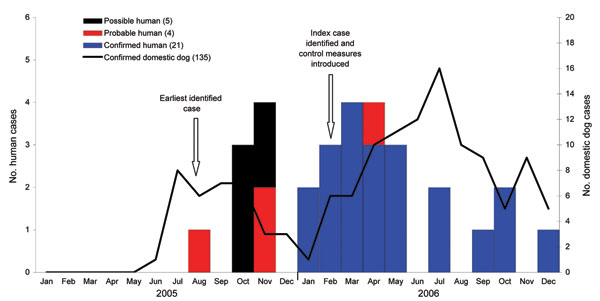Volume 13, Number 12—December 2007
Research
Epidemiology and Molecular Virus Characterization of Reemerging Rabies, South Africa
Figure 3

Figure 3. Numbers of possible, probable, and confirmed human cases and laboratory-confirmed domestic dog rabies cases by month of diagnosis, Limpopo Province, South Africa, 2005–2006.
Page created: July 06, 2010
Page updated: July 06, 2010
Page reviewed: July 06, 2010
The conclusions, findings, and opinions expressed by authors contributing to this journal do not necessarily reflect the official position of the U.S. Department of Health and Human Services, the Public Health Service, the Centers for Disease Control and Prevention, or the authors' affiliated institutions. Use of trade names is for identification only and does not imply endorsement by any of the groups named above.